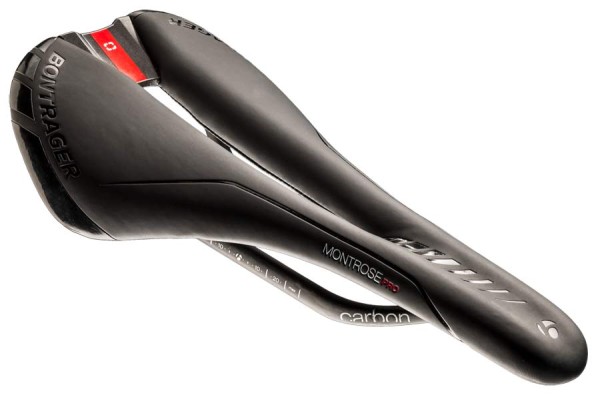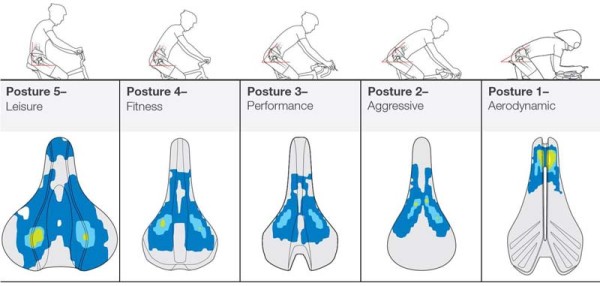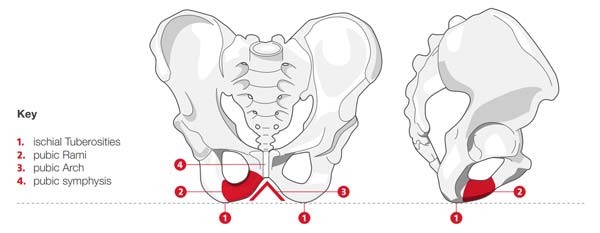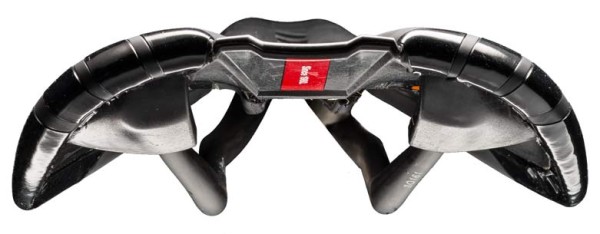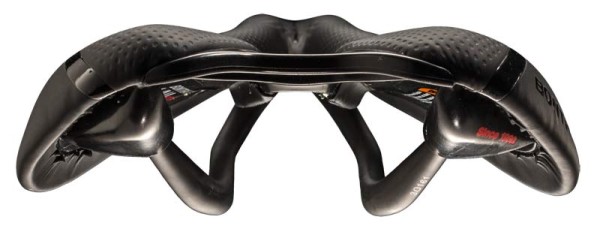Built around five postures and three contours, the new Bontrager InForm BioDynamic saddle collection has something for everyone, from the upright cruiser rider to the horizontal professional TT racer.
Using leisure, fitness, performance, aggressive and aerodynamic postures as the different baselines for pelvic rotation, they then looked at the saddle’s curvature, profile and transition to make them as comfortable as possible while also maximizing performance on saddles aimed at more serious athletes (upright comfort riders aren’t really seeking better Strava times, after all).
As they describe it: “The curvature of the saddle is thought of as a cross-sectional view through the saddle at the critical point of the saddle where the rider is primarily seated. The profile contour is defined by the saddle’s shape in side view. The transition contour is defined by the edges of the saddle in the top view.”
Here’s how all that comes together in the performance-oriented Affinity, Montrose and Anja saddles…
The five postures are outlined with simple graphics matched to the pressure zones Bontrager found through pressure mapping, high speed video recording and human computer modeling. The data was parsed by mechanical and biomechanical engineers to develop the saddle shapes around the pelvic region:
The goal with any good saddle is to suspend the rider on the bony structures without compressing the soft tissues between them. Depending on the rider’s position and flexibility, pelvic tilt can change the point on which the sit bones rest on the saddle.
That led to different curvatures…
…profiles…
…and transitions depending on the way you sit on your bike. Depending on how much your round your back and/or rotate your pelvis, you may lean toward one saddle or the other, too, which can be determined by just trying a couple of saddles out via your local dealer or having a friend photograph you from the side while on a trainer and using your best guess. (In my experience, a rounded back typically means less forward pelvic rotation, which indicates less flexibility)
In addition to the specific shaping, each saddle comes in a variety of widths to better fit different size hips. Trek Stores and some Bontrager dealers will have the sit ‘n’ fit system to measure your hips before you buy. And if you end up not liking the fit, they have an unconditional guarantee that lets you return it to try a different model or size (or, presumably, just get a refund).
The Montrose Pro, shown at the top of the post and directly above, is a Posture 2 saddle with a central relief cutout. It uses oversize 7x9mm carbon saddle rails that are suspended at the rear to improve small bump absorption. Bontrager offers oversize rail mounts for their seatposts, which these saddles require, and most other seatpost brands also offer the appropriate mounts as necessary.
It’s offered in 128mm, 138mm and 148mm widths, all are 270mm long. Weights range from 160g to 173g, retail is $199.
The Affinity, which was introduced in 2010, gets a complete makeover using the new fit data and is a Posture 3 design. It has a mildly dropped center channel rather than the full cutout and comes in both black and white. The synthetic leather cover hides multi density padding. The Affinity Pro shares the suspended oblong carbon rails and same three widths and 270mm length. Weights range from 152g to 162g, retail is $199.
For women, there’s the Ajna Pro, which shares the more aggressive Posture 2 design and wide cutout. Tech features are the same as the others, but widths are 144/154/164 millimeters. Weight is 160g to 172g, retail is $199.
The Ajna’s curvature and design is made specifically for women’s hip shapes. We have all three of these on test, look for a review later in the year.
